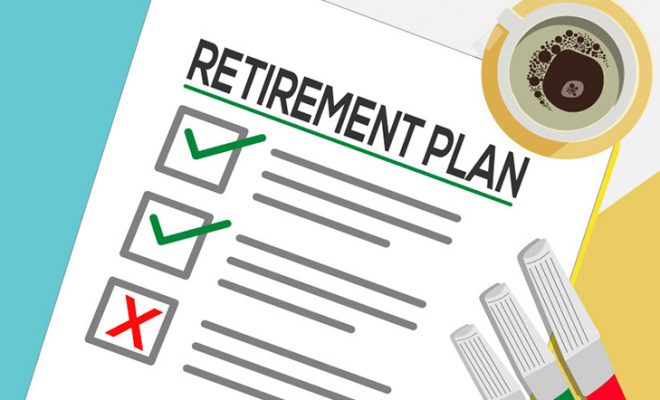How to Save for Retirement Even When It’s Getting Harder

In a world where the cost of living is steadily climbing and market uncertainties loom large, the idea of a serene retirement can seem like a distant dream. But let’s face it: the importance of saving for retirement hasn’t waned; if anything, it’s become more crucial. The reality is that securing your financial stability for the golden years is a key objective that these challenges shouldn’t overshadow.
So, how do we tackle this? The answer lies in smart and strategic retirement planning. Gone are the days when retiring at 60 was a one-size-fits-all goal. It’s time to rethink when to start stashing away those savings and how to modify your plan in a world that’s constantly changing. The best retirement advice isn’t just about saving money; it’s about creating a diversified portfolio that’s robust enough to weather economic shifts. Consider consulting with a financial advisor who can help devise a personalized retirement plan based on your unique needs and goals.
In this article, we dive into the nitty-gritty of why saving for retirement should top your financial priorities list, the optimal time to start, and the best ways to save for retirement, ensuring you’re well-equipped to turn those retirement dreams into reality.
Table of Contents
When to start saving for retirement?
This question, while seemingly straightforward, is layered with complexities unique to each individual’s circumstances. Understanding the advantages of beginning early and strategizing to combat the gap if you are starting later, is key to making informed and effective decisions for your retirement journey.
The earlier, the better
The consensus among financial experts is clear: the sooner you start saving for retirement, the better. Why? The magic lies in compound interest. This financial phenomenon, aptly nicknamed ‘interest on interest,’ transforms your savings into a growing, self-feeding fund over time. Each year, your savings generate interest, and this interest then earns more interest, creating a snowball effect that significantly amplifies your retirement savings.
Here’s why kicking off your retirement savings early can be a game-changer:
1. Maximizes the growth potential
The longer your money is invested, the more time it has to grow through compound interest, potentially turning modest savings into a substantial nest egg.
2. Eases contribution pressure
Starting early means you can spread your contributions over a longer period, making it easier to integrate them into your budget without feeling overwhelmed.
3. Helps to achieve your retirement dreams
Starting saving early enhances your likelihood of realizing the retirement lifestyle you envision, offering you more financial flexibility and peace of mind as you age.
Strategies for late starters
If you’re getting a later start on your retirement savings, don’t lose heart. While starting early with your retirement savings offers the best chance to maximize growth and ease the financial burden, it’s never too late to start. With the right strategies, even late starters can build a retirement fund that supports their goals and provides financial security. Here’s how you can make the most of your savings, even if you’re starting later than you’d hoped:
1. Adapt your approach
Late starters should consider a strategic shift in their asset allocation. Balancing risk with stable, reliable investments is crucial to minimize the impact of market volatility and ensure a steady income stream during retirement.
2. Be consistent and disciplined with savings
Even at a later stage, consistent and disciplined saving can make a significant difference. It might mean adjusting your lifestyle or budget, but the impact on your retirement funds can be substantial.
What are the best ways to save for retirement?
1. Establish clear retirement objectives
The first step towards securing your financial future is to define your retirement aspirations. Envision your ideal lifestyle in retirement, considering factors such as desired location, travel plans, leisure activities, and potential healthcare needs. Align these plans with a tangible financial goal, estimating the income you’ll need to support your desired lifestyle. This will serve as the foundation for your retirement savings plan.
2. Embrace early and consistent saving
The sooner you start saving, the more time your contributions have to grow exponentially. Even small, regular contributions made early on can accumulate significantly over time. Aim to save 10-15% of your income throughout your working years.
3. Leverage employer-sponsored retirement plans
If your employer offers a retirement savings plan, such as a 401(k), take advantage of it to the maximum extent possible. These plans often provide tax-deferred or tax-advantaged contributions, allowing you to save for retirement while reducing your taxable income. Additionally, many employers offer matching contributions, providing free money to boost your savings significantly.
4. Diversify your investment portfolio
Mitigate risk and protect your savings from market fluctuations by diversifying your retirement investments across different asset classes. A well-diversified portfolio typically includes stocks, bonds, and real estate. The allocation between these asset classes depends on your risk tolerance, time horizon, and individual circumstances. Consider seeking guidance from a financial advisor to create a suitable investment portfolio tailored to your needs.
5. Automate savings for effortless growth
Make saving effortless by setting up automatic contributions from your paycheck or bank account. This ensures you’re consistently saving towards your retirement goals without remembering to make manual transfers. Regular, automated contributions allow your savings to grow steadily over time, taking advantage of compound interest and the power of time.
6. Regularly review and adjust your plan
As your circumstances change throughout your working years, revisit your retirement savings plan and adjust as needed. Review your investments to ensure they align with your risk tolerance and time horizon. Consider increasing your contributions as your income grows, and rebalance your portfolio periodically to maintain the desired asset allocation.
7. Seek professional guidance
If you feel uncertain or overwhelmed about your retirement planning, seeking guidance from a financial advisor may be beneficial. Seeking personalized advice based on your unique financial situation and retirement objectives can be invaluable. A financial advisor is equipped to assist you in navigating intricate investment choices, crafting a thorough retirement savings strategy, and optimizing your tax situation to maximize potential savings.
8. Understand the different asset classes
Before venturing into diversification, it’s essential to understand the different asset classes available. These classes encompass stocks, bonds, real estate, commodities, and cash equivalents. Each asset class possesses unique risk and return characteristics, influencing your overall portfolio’s risk profile.
9. Allocate assets based on risk tolerance
Your risk tolerance plays a significant role in determining your asset allocation. If you’re comfortable with higher risk, you may allocate a larger portion of your portfolio to stocks, which offer the potential for higher returns but also carry greater volatility. Conversely, if you prefer lower risk, you may allocate more to bonds, which offer lower returns but also provide stability and income.
10. Utilize tax-advantaged accounts to enhance savings
Saving for retirement can seem daunting, especially in today’s challenging economic climate. According to a study by the American Society of Pension Professionals and Actuaries, people who retired in 2021 required almost twice the amount needed by those retiring in 1990 to attain an 80% replacement of their pre-retirement income. Add to it taxes that may eat up a significant portion of your retirement corpus, leaving you with even less.
Using tax-advantaged accounts can, thus, be a powerful strategy to enhance your savings and secure a comfortable future. These accounts offer many benefits, including tax-deferred or tax-free growth, which can significantly boost your nest egg. Here’s how you can leverage them:
a. Embrace tax-deferred accounts for accelerated growth
Tax-deferred accounts, such as traditional IRAs and 401(k)s, allow you to contribute pre-tax dollars, meaning your contributions are deducted from your taxable income. This can lower your current tax burden and provide more money for your retirement savings. As your investments grow within these accounts, you won’t owe taxes until you begin withdrawing funds in retirement.
b. Explore tax-free accounts for future tax savings
Accounts that are exempt from taxes, like Roth IRAs and Roth 401(k)s, provide the benefit of tax-free withdrawals in retirement. By contributing with after-tax dollars, your earnings grow tax-free, and there are no tax obligations on withdrawals during your retirement years. This can prove advantageous, especially if you anticipate being in a higher tax bracket during retirement compared to your current situation.
11. Consider catch-up contributions if eligible
If you’re behind on your retirement savings, catch-up contributions allow you to contribute more than the standard annual limits. This can be particularly helpful if you’re nearing retirement age and want to accelerate your savings.
Why is saving for retirement important?
1. Uncertainty about Social Security
Social Security reserves are projected to be depleted by 2035. While legislative action could potentially address the lack of funding, the uncertainty surrounding future changes to the program makes it imperative to look beyond Social Security for retirement income.
2. Build financial security
Retirement savings provide a financial safety net that can help you maintain your lifestyle after you stop working. This financial security can give you peace of mind and allow you to pursue your passions without worrying about making ends meet.
3. Take advantage of tax benefits
Many retirement savings plans offer tax benefits, such as tax-deferred or tax-free growth of your investments. This can significantly increase your overall retirement savings.
4. Secure peace of mind
Knowing that you have a nest egg saved for retirement can provide you with great peace of mind. This can reduce stress, allowing you to focus on enjoying your retirement years.
5. Pursue lifestyle flexibility
Saving for retirement can allow you to pursue your passions and interests in retirement. Whether you want to travel, pursue hobbies, or spend time with loved ones, having a comfortable financial cushion can make these dreams a reality.
6. Harness compound growth
Starting early amplifies the power of compound interest. The longer your money is invested, the more it grows. This exponential growth potential becomes a crucial advantage, especially during times of volatility, and helps secure your retirement nest egg.
7. Adaptability to economic changes
A well-managed retirement portfolio provides stability in the face of economic uncertainties. Diversifying your investments shields you from market fluctuations, ensuring a resilient financial future.
To conclude
Saving for retirement demands a strategic and forward-thinking approach and unwavering commitment. By starting early, maximizing employer-sponsored plans, leveraging IRAs, investing wisely, adapting to changing conditions, and seeking professional guidance, you can overcome the challenges and secure a comfortable and fulfilling retirement.
You can also consider personalized retirement planning and avail the services of a financial advisor who can create a strategy based on your unique financial situation and goals and help you work towards a secure retirement. Use the free advisor match service to get matched with 1 to 3 financial advisors based on your financial requirements. All you need to do is answer a few simple questions on your financial needs, and the match tool can help connect you with advisors that are best suited to help you.
For additional information on retirement saving strategies that can be tailored to your specific financial needs and goals, visit Dash Investments or email me directly at dash@dashinvestments.com.
About Dash Investments
Dash Investments is privately owned by Jonathan Dash and is an independent investment advisory firm, managing private client accounts for individuals and families across America. As a Registered Investment Advisor (RIA) firm with the SEC, they are fiduciaries who put clients’ interests ahead of everything else.
Dash Investments offers a full range of investment advisory and financial services, which are tailored to each client’s unique needs providing institutional-caliber money management services that are based upon a solid, proven research approach. Additionally, each client receives comprehensive financial planning to ensure they are moving toward their financial goals.
CEO & Chief Investment Officer Jonathan Dash has been profiled by The Wall Street Journal, Barron’s, and CNBC as a leader in the investment industry with a track record of creating value for his firm’s clients.





















